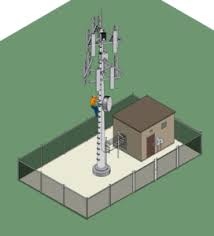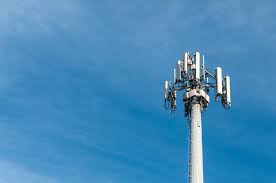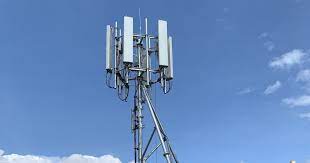
Cell sites are nothing but the cell towers we see and the expressions are often used interchangeably in industrial parlance. A Cell Site is nothing but the antenna equipment and ground equipment that are used to transmit cell phone signals to and from the mobile phone back to the receiver. This equipment usually consists of transmitter/receivers, GPS, backup power sources, base transceiver station (BTS), and some other elements. A Cell Phone Tower is the actual physical structure that the antennas are attached to. It’s pertinent to note that a tower can have multiple sites mounted upon it.

While the equipment is fundamentally similar at most wireless communication sites, (a transmitter/receiver, antenna(s), coaxial or hybrid cables, power and backhaul), there are various types of cell sites installed as per usage. Cumulatively, the entire interwoven network of sites (from macrocell to picocell, and more) and other constituent equipment constitutes the cellular network. The advent of Distributed Antenna Systems (DAS) and small cells, revolutionised the scenario and thus there is more diversity today in the deployment of cellular equipment than ever before. The various types are designed to work with each other comprehensively in a system. This system is known, in the industry, as a Heterogeneous Network (Het-Net).

A cellphone may not work at times because it is too far from a mast, or because the phone is in a location where cell phone signals are attenuated by thick building walls, hills, or other structures. The signals do not need a clear line of sight but greater radio interference will degrade or eliminate reception. When many people try to use the cell mast at the same time, e.g. during a traffic jam or a sports event, then there will be a signal on the phone display but it is blocked from starting a new connection. The other limiting factor for cell phones is the ability to send a signal from its low powered battery to the cell site. Some cellphones perform better than others under low power or low battery, typically due to the ability to send a good signal from the phone to the mast.

The base station controller (a central computer that specializes in making phone connections) and the intelligence of the cellphone keep track of and allow the phone to switch from one mast to the next during the conversation. As the user moves towards a mast it picks the strongest signal and releases the mast from which the signal has become weaker; that channel on that mast becomes available to another user.
The main installation comprises of a cabinet that contains radio units and other radio equipment all linkedby a backhaul to the radio network controller or mobile core network depending on which network technology (3G, 4G, 5G etc.) is being used. Specific frequencies are ascribed to the radio units that mobile operators possess as part of their frequency spectrum. The antennas for the radio units must be mounted at certain heights so that the resulting signals can reach the cellular devices with as few obstructions as possible. These radio network entities are called base stations and depending on the network technology, they can be called different things. In 2G GSM networks, the base station is known as Base Transceiver Station.







